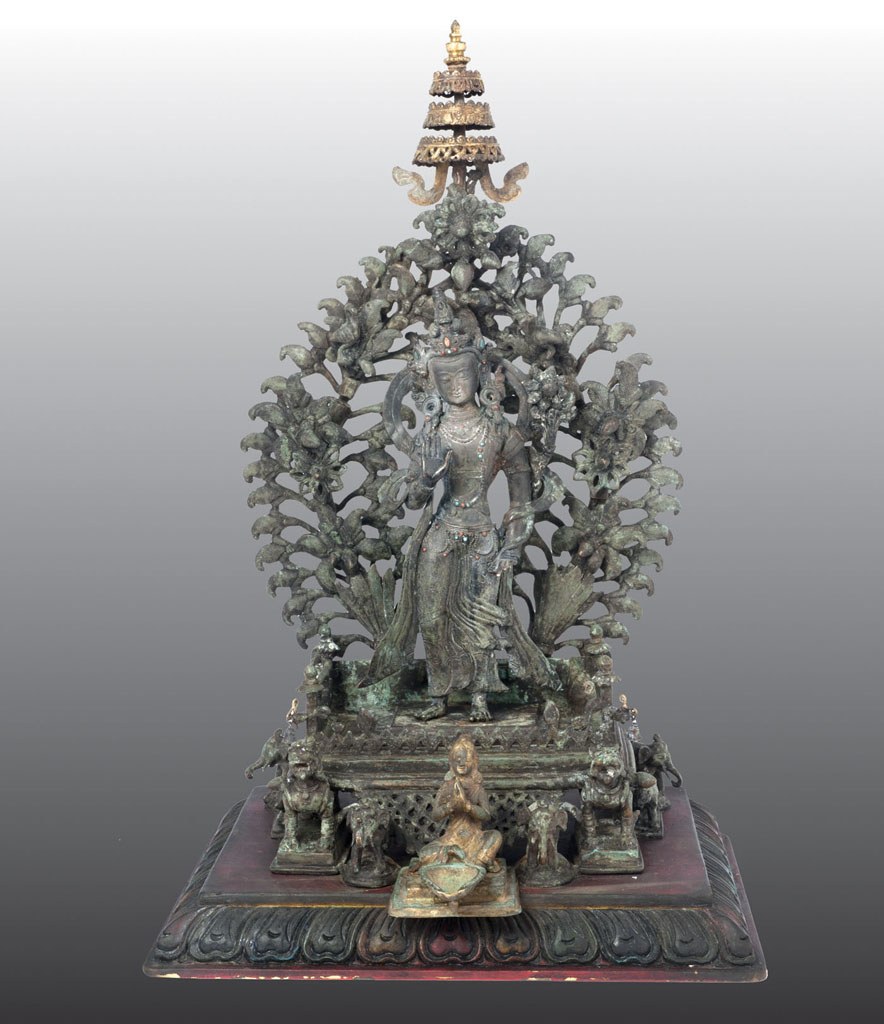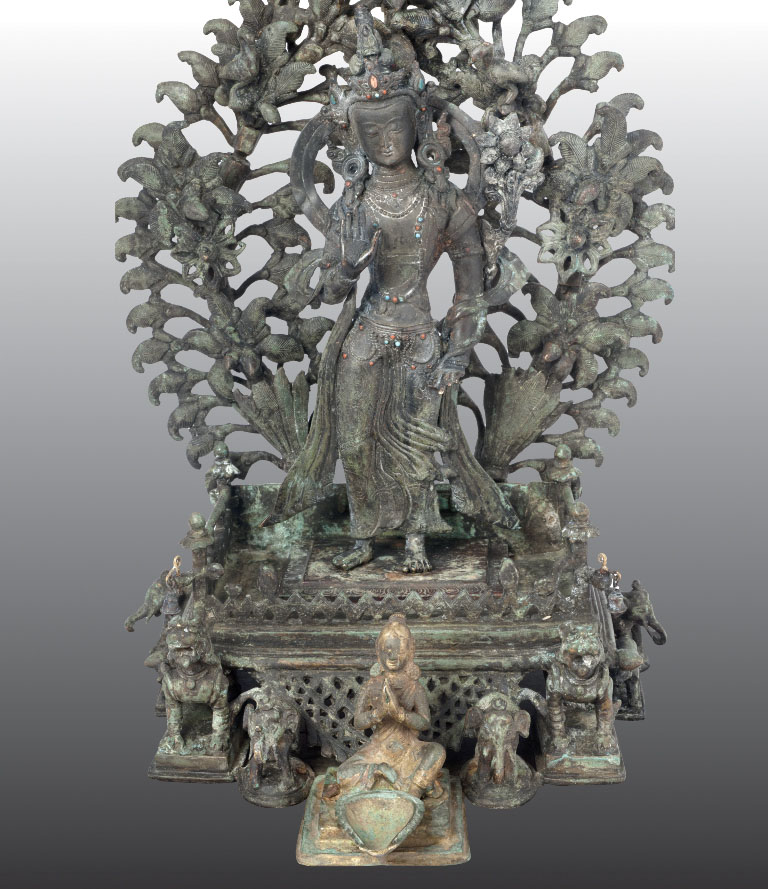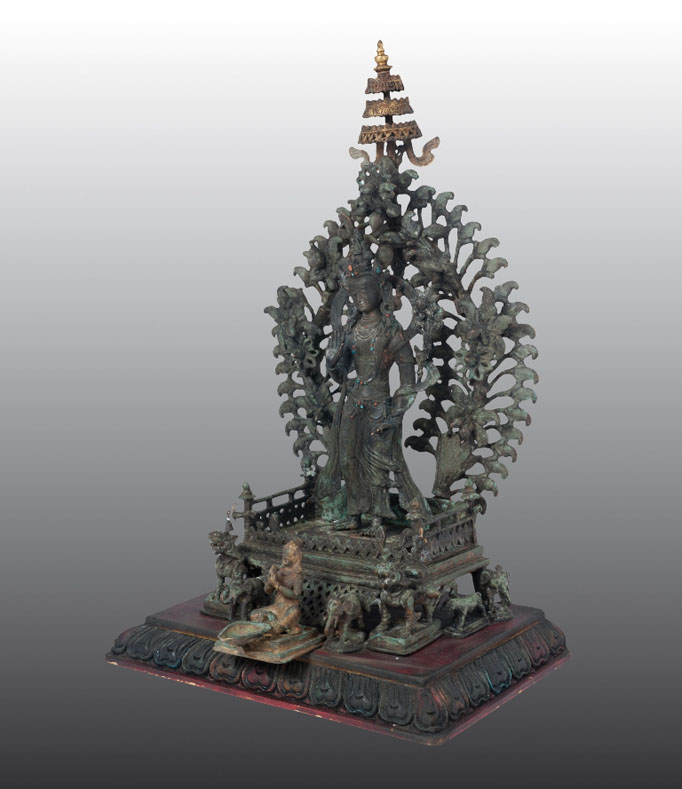Padmapâni with devoteeNepal - Brass - Height 48 cm. - 19th century Sha PeriodPadmapâni is depicted here making the gesture of fearlessness, abhaya-mudrâ, with his right hand. This gesture denotes his ability to pacify and, most importantly, his faculty to protect human beings against threats of any kind which may damage their spiritual or physical health (1). The gesture is, therefore, addressed towards the believer who turns to Padmapâni in order to invoke his protection. Indeed, the devoted believer who commissioned this image is depicted at the Bodhisattva’s feet, hands joined at the height of her heart in the gesture of homage (nam- askâra-mudrâ)and turned towards the observer. Judging by her position, with her front turned towards the viewer and not towards the Bodhisattva, and the presence of the small lamp opposite her, it is likely that this object was placed in a temple or family chapel, facing a hierarchically more important deity. The lady wears heavy earrings and a sari, the draping of which is hinted at by slight engrav- ings at the height of the chest. Although her arms are represented in an obsequious attitude, her legs are relaxed and her left knee is raised. This position can also be found in the depictions of some Nepalese queens like, for example, Riddhilakshmî, the consort of king Bhûpatîndra Malla, in the Vaishnava temple of Changu Nârayâna. The image of Padmapâni has been produced finely, show- ing the delicate features of her face and a special attachment of her hair, highlighting her prominent forehead, which was already visible in Nepal as of the 15th century (2). In- deed, the Newar artists of the Nepal Valley look constantly at the past as a reference point for their artistic production. Although they do indeed turn to the present, creating new stylistic elements, they remain faithful to standard iconography and iconometry. The image of Amitâbha, the Cosmic Buddha presiding over the Lotus Family to which Padmapâni belongs, can be made out on the latter’s elaborate diadem, embellished with turquoises and coral.The halo (prabhâ) encircling the Bodhisattva consists in a multitude of large flowers and a garland of buds. It is a typical element of the art developed following the Gorkha dynasty’s conquest of the Nepal Valley (1768-1769), and by aesthetics conditioned by the taste of the Rana family, to whom the first ministers of Nepal belonged from 1846 through to 1951 (3). Stylistically similar halos can also been seen in the monastery of Rudravarna in Patan, both around a pair of statues depicting the goddess Târâ which flank the portal of the main chapel, and around the portal itself, wheretwo luxuriantly flowered shrubs branch out to join together forming a prabhâ. On the top of the latter there is a triple umbrella, similar to that of the statue presented here, symbol of the Three Jewels: the Buddha, his doctrine and the community of his followers. (3) Mary Shepherd Slusser, Nepal Mandala. A Cultural Study of the Kathmandu Valley, Princeton University Press, Princeton 1982, p. 402. ALC (Free Circulation) |



